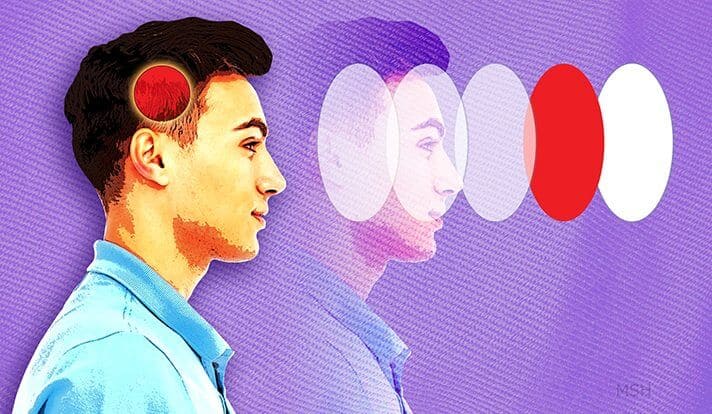The color red is usually associated with inducing compliant behavior with stop signs, warning lights and corrections on a graded assignment.
What if this color did just the opposite in certain situations? Results from a new study published online in the Journal of Consumer Psychology suggest that certain personality types are more likely to rebel against the norm–rather than comply–when seeing the color red.
The study was inspired by a problem faced by a Dutch child helpline that offered free counseling to children ages 8 to 18. Leaders of the non-profit organization that ran the service were frustrated because a high percentage of the calls were from pranksters who had no interest in genuine counseling. The organization contacted the researchers for help.
Previous studies suggested that the color red leads to more risk-averse and compliant behavior. With this in mind, the researchers launched an experiment that showed three different colors on the chat screen while callers were on hold for a counselor. They expected that red would reduce the number of prank chats.
“To our surprise, the prank chatting was higher with the red color background than the white or blue,” says study author Ravi Mehta, an assistant professor of business administration at the University of Illinois. “Prank chatting occurred about 22 percent of the time with the red background, compared to 15 percent for the white or blue.”
The researchers realized another cognitive response was at work. The color red can increase non-compliant behavior in people with “sensation seeking” personality types. These people seek novel and intense sensations and experiences–and they’re willing to take physical, social and financial risks for the sake of such experiences.
To test whether personality type influenced the response to red, the researchers conducted another study. In this experiment, college students completed an online questionnaire to assess their level of sensation seeking. Next they answered questions to evaluate their attitude toward compliant behavior, and the questions were presented on either a red or white screen. People high in sensation seeking who viewed the red background preferred statements that were resistant to compliant behavior. This did not happen when they saw a white background.
The findings suggest that the assumptions about the color red may not apply to everyone, and this could have implications for things like anti-smoking and safe sex campaigns.
“Using red to promote these preventative health measures might not work for people who are high in sensation seeking, and it might even backfire,” Mehta says.
This could also apply to signs warning people not to swim, avoid a dangerous cliff or trespass. Further research is needed to explore whether this finding applies to healthy eating behavior, Mehta says. Red could help some people comply with health eating recommendations, but for high sensation seeking personality types, this may not be the color of choice.
This study will appear in the January, 2017 issue of the Journal of Consumer Psychology
If our reporting has informed or inspired you, please consider making a donation. Every contribution, no matter the size, empowers us to continue delivering accurate, engaging, and trustworthy science and medical news. Independent journalism requires time, effort, and resources—your support ensures we can keep uncovering the stories that matter most to you.
Join us in making knowledge accessible and impactful. Thank you for standing with us!

